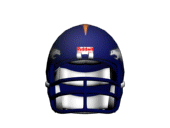Denver Broncos Team History
 The
Denver Broncos have been one of pro football's biggest winners
since the merger of the American and National Football Leagues
in 1970. The Broncos' on-the-field success is more than matched
by a spectacular attendance record of sellout crowds (except
for strike-replacement games) every year since 1970. Denver's
annual sale of approximately 74,000 season tickets is backed
by a waiting list in the tens of thousands. The Broncos now
play in the new INVESCO Field at Mile High which opened in 2001,
but for 41 seasons played on the same plot of ground on which
the original AFL team performed in 1960. This, however, is the
only similarity of Denver teams of yesteryear and today. The
upstart AFL was the target of many jokes and jeers by the established
National Football League in the early 1960s, but the Broncos
were the most laughed-at of all. The
Denver Broncos have been one of pro football's biggest winners
since the merger of the American and National Football Leagues
in 1970. The Broncos' on-the-field success is more than matched
by a spectacular attendance record of sellout crowds (except
for strike-replacement games) every year since 1970. Denver's
annual sale of approximately 74,000 season tickets is backed
by a waiting list in the tens of thousands. The Broncos now
play in the new INVESCO Field at Mile High which opened in 2001,
but for 41 seasons played on the same plot of ground on which
the original AFL team performed in 1960. This, however, is the
only similarity of Denver teams of yesteryear and today. The
upstart AFL was the target of many jokes and jeers by the established
National Football League in the early 1960s, but the Broncos
were the most laughed-at of all.
Bob Howsam, a successful minor league baseball owner who built
Bears Stadium in the 1940s, was awarded an AFL charter franchise
on August 14, 1959. Severely limited financially, Howsam clothed
his first team in used uniforms from the defunct Copper Bowl
in Tucson, Ariz. Making the uniforms particularly joke-worthy
were the vertically-striped socks that completed the Broncos'
dress. Two years later, when Jack Faulkner took over as head
coach and general manager, the socks were destroyed in a public
burning ceremony.
While Denver's on-the-field experience during the 10 years of
the AFL was for the most part bleak, the Broncos did have some
bright moments. On September 9, 1960, they won the first-ever
AFL game with a 13-10 victory over the Boston Patriots. On August
5, 1967, they scored the first win ever for an AFL team against
an NFL opponent with a 13-7 triumph over the Detroit Lions.
But at the end of the AFL's decade, Denver's 39-97-4 record
was the worst for any of the original eight AFL teams.
Denver's current attendance bonanza can be traced to a remarkable
turn of events in 1965 that first threatened and then assured
the future of pro football in the city. Several minority partners
formed a majority voting block to sell the Broncos to Atlanta
interests, but, at the last minute, the Phipps brothers, Gerald
and Allan, who had been left out of the voting block, bought
the team and 34,657-seat Bears Stadium. Excited fans showed
their appreciation by purchasing almost 23,000 season tickets,
compared to 7,996 the year before.
Before the 1968 season, Bears Stadium was purchased by the city
and renamed Denver Mile High Stadium. It was expanded to 51,706
capacity that year, then to 63,532 in 1976 and to 75,100 in
1977. As the stadium grew, so too did season-ticket sales fill
every extra seat.
In their 14th season in 1973, the Broncos under Coach John Ralston
finished 7-5-2 for their first winning season ever. Thus started
a trend that saw the Broncos fall below the .500 mark only three
times in the next 20 seasons. In the 14-year period between
1977 and 1991, the Broncos won seven AFC Western Division titles
and AFC championships in 1977, 1986, 1987 and 1989. It was the
kind of success the Broncos' founders could not, with good reason,
possibly have imagined.
The Broncos reached the pinnacle of the pro football world,
as the team captured its first world championship with a victory
over the Green Bay Packers in Super Bowl XXXII. With a victory
over the Atlanta Falcons in Super Bowl XXXIII, Denver accomplished
what only five other teams had achieved — back-to-back
Super Bowl championships. |